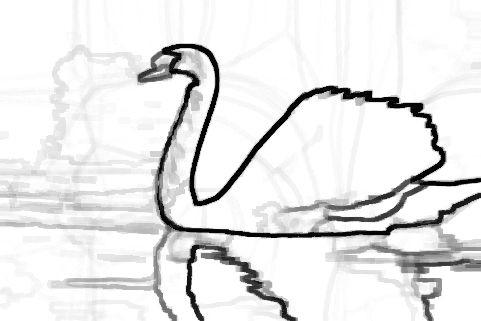Driving down a road, you have to identify a lot of different objects at once. The car in front of you, a pothole in the road, or a street sign are all objects that a driver may need to take note of, but what if your eyes lacked the ability to identify these everyday objects? What if one eye was only good at seeing the road while the other was only good at identifying the car in front of you?
These are all problems that a computer-controlled vehicle may face, but researchers at NC State have developed new methods that allow computers to “see” and take in everything the road may present.
Edgar Lobaton, an assistant professor of electrical and computer engineering, and Qian Ge, a graduate student studying electrical engineering, have developed a new method of image segmentation, the process by which computers take in visual information.
“Segmentation refers to the fact that you have an image and you’re going to divide it into little significant pieces,” Lobaton said.
Lobaton and Ge have developed a new method of image segmentation that involves taking multiple algorithms and combining them into a single, more effective program. The research came from their prior work on a 2012 self-driving car study.
“We found when we used one algorithm to do the image segmentation, we couldn’t get good results for all of the images,” Ge said. “We tried several segmentation algorithms and found that the different algorithms could get good results for different images. So then we thought, if we combine all of the segmentation results, could we get better segmentations?’”
Lobaton and Ge took this idea and launched a new, broader study. They found that by running multiple image segmentation algorithms at once, a computer could process an image more accurately, allowing it to break down objects by their patterns.
Lobaton and Ge said that many different variables affect an image segmentation algorithm’s accuracy, such as color and sharpness of an object’s edges. An algorithm registers a certain repeating variable, like the pattern of asphalt, and identifies it as an object, like a street.
Ge described the process like trying to find a book in a bookshelf. The computer would take an image of the bookshelf a divide it into all of the different books. The book spine with the information or patterns that match the book would be identified separately from the whole shelf.
“This problem of looking at the segmentation of images is kind of like a building block that can be used for a lot of different applications,” Lobaton said.
Lobaton said this process could be improved further by parallelizing the program’s code. Parallelization essentially means running multiple things at the same time. In this case, it means running multiple image segmentation algorithms at once as opposed to going through each algorithm individually, collecting all of that algorithm’s data and only then moving on to the next.
Image segmentation can be used for everything from medical imaging to surveillance. Identifying cancerous tissue or highlighting a single person walking through a large crowd are two potential uses of the technology that could be developed using Lobaton and Ge’s work.
For now, Lobaton and Ge are hard at work finding new algorithms to test and add to their program. Ge is presenting their work in Las Vegas at the IEEE Conference on Computer Vision and Pattern Recognition on July 1.








